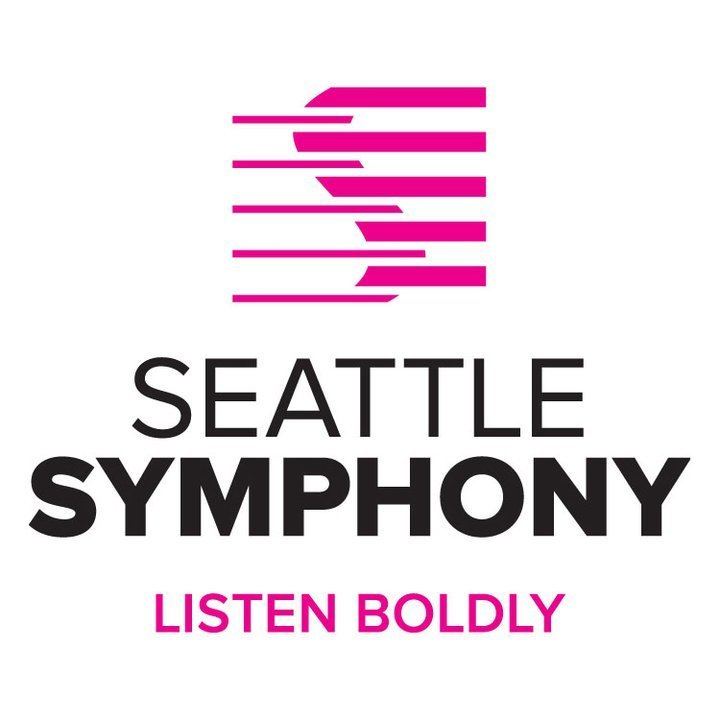Founded 1903 Active from 1903 Genre Classical | Established 1903 | |
 | ||
Website www.seattlesymphony.org Record labels Varèse Sarabande, Reference Recordings Similar Profiles | ||
The Seattle Symphony is an American orchestra based in Seattle, Washington. Since 1998, the orchestra is resident at Benaroya Hall. The orchestra's season runs from September through July, and serves as the pit orchestra for most productions of the Seattle Opera in addition to its own concerts.
Contents
- Beethoven 9 chicago symphony orchestra riccardo muti
- Beginnings
- Pacific Northwest Symphony Orchestra
- Gerard Schwarz
- Ludovic Morlot
- References
Beethoven 9 chicago symphony orchestra riccardo muti
Beginnings
The orchestra gave its first performance on December 29, 1903, with Harry West conducting. Known from its founding as the Seattle Symphony, it was renamed in 1911 as the Seattle Philharmonic Orchestra. In 1919, the orchestra was reorganized with new bylaws under the name Seattle Symphony Orchestra. The 1921–22 season was cancelled due to financial problems.
Pacific Northwest Symphony Orchestra
In 1947, the Seattle Symphony merged with the Tacoma Philharmonic to form the Pacific Northwest Symphony Orchestra. Performances were held in Seattle, Tacoma, and Olympia, with conducting duties split between Carl Bricken and Eugene Linden. This arrangement ceased after one season, when the Seattle Symphony decided to withdraw from it. A feud between the musicians and the board surfaced in 1948, and a majority of the musicians divorced themselves from the board and created a new orchestra called the Seattle Orchestra, a partnership (collective) operated by the musicians themselves, who chose Linden as their conductor. The Seattle Symphony announced a separate orchestra season with eighteen concerts at the old Meany Hall for the Performing Arts on the University of Washington campus. The symphony was to be directed by Stanley Chapple, and a series of guest conductors: Artur Rodzinski, Jacques Singer, and Erich Leinsdorf. Personnel for the Seattle Symphony were announced in the press on October 24, 1948, and included a few musicians who had chosen not to defect to the Seattle Orchestra and some new faces as well. The Seattle Symphony season was then postponed and eventually cancelled. The Seattle Orchestra, meanwhile, gave its first performance on November 23, 1948. An accommodation was reached between the Seattle Symphony and the Seattle Orchestra, and the two organizations merged, and the name "Seattle Symphony Orchestra" was retained. The partnership system was also retained, and musicians gained access onto the board. The partnership system was eventually dissolved at the request of Milton Katims in 1955. Even so, for most of its 100-year history, and especially today, the ensemble is known by the two-word name "Seattle Symphony".
Gerard Schwarz
Gerard Schwarz became music advisor of the orchestra in 1983 and principal conductor in 1984, before being named music director in 1985. Under Schwarz's leadership, the orchestra became particularly known for performing works of twentieth-century composers, especially neglected American composers. Together, Schwarz and the orchestra have made more than 100 commercial recordings, including the major orchestral works of Howard Hanson and David Diamond as well as works by Charles Tomlinson Griffes, Walter Piston, Paul Creston, William Schuman, Alan Hovhaness, Morton Gould, David Diamond, and others, for Delos International and Naxos Records. The orchestra received its first Grammy nomination in January 1990 for a 1989 recording of music of Howard Hanson. The orchestra also recorded a musical score to the SeaWorld, Orlando, stage show A'lure, The Call of the Ocean.
Schwarz received praise for his championing of American composers and his skills in fund-raising. However, his tenure was also marked by controversies between him and several symphony musicians, which included several legal disputes. In September 2008, the orchestra announced the conclusion of Schwarz's music directorship after the 2010–2011 season, at which time Schwarz became the orchestra's conductor laureate.
Ludovic Morlot
In October 2009, Ludovic Morlot first guest-conducted the Seattle Symphony in October 2009. He returned in April 2010, as a substitute conductor in the wake of the 2010 Eyjafjallajökull eruptions. Based on these appearance, in June 2010, the orchestra announced the appointment of Morlot as its 15th music director, effective with the 2011–2012 season, with an initial contract of six years. In July 2015, the orchestra announced the extension of Morlot's contract through the 2018-2019 season. Morlot has taken particular interest in fostering music from Seattle-based composers, including composers within the orchestra itself. His work with the orchestra has included the commissioning and premiere of John Luther Adams' Become Ocean, which went on to win the 2014 Pulitzer Prize for Music and the 2015 Grammy Award for Best Classical Contemporary Composition. The commercial recording of Become Ocean led to a donation by Taylor Swift to the Seattle Symphony of USD $50,000 to the Seattle Symphony.
